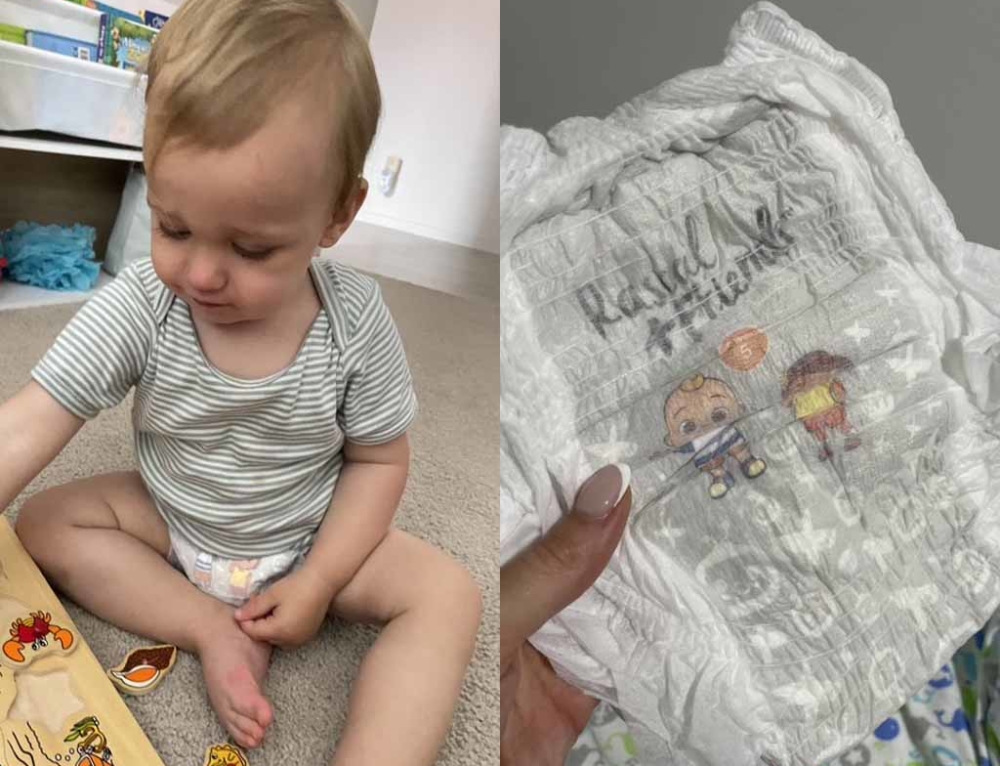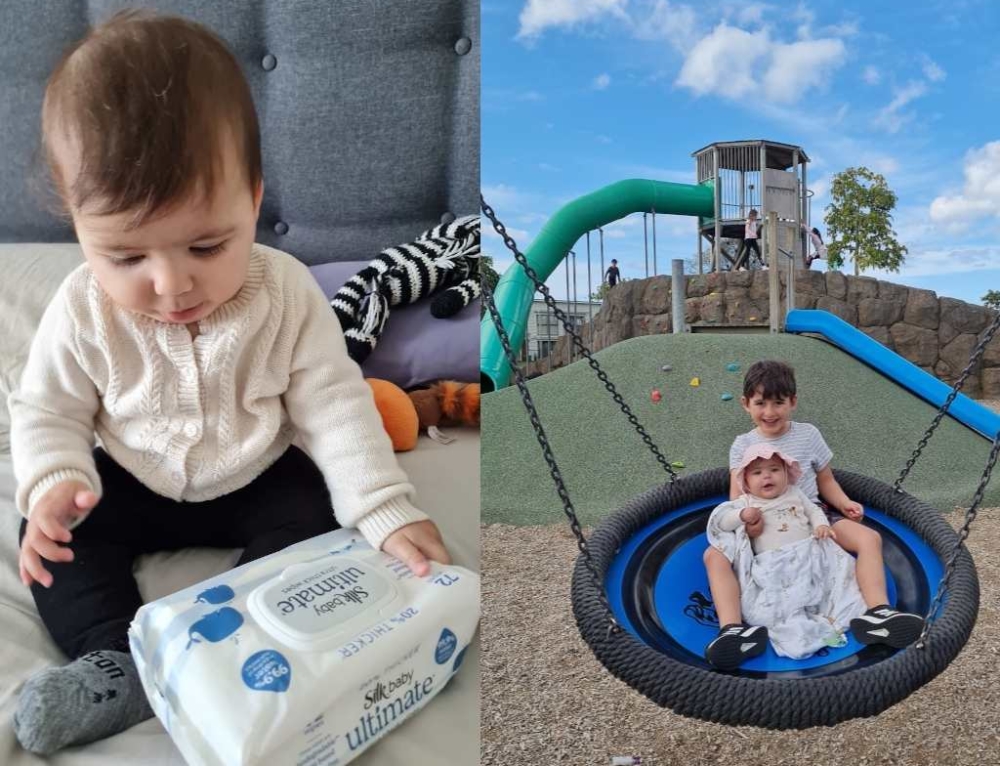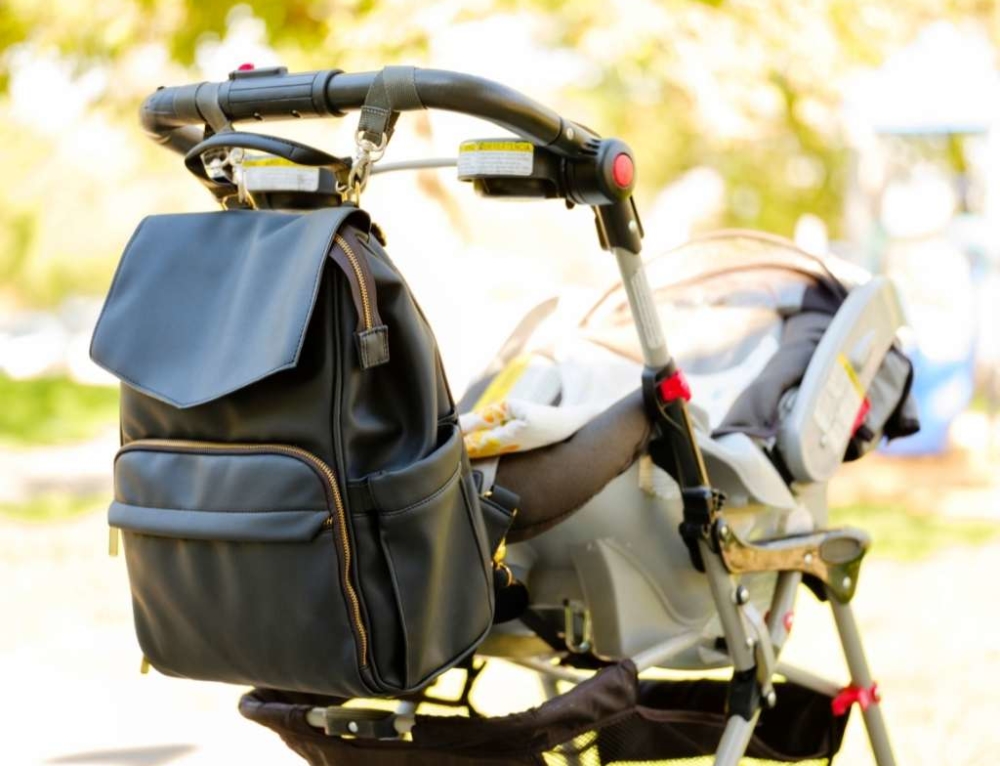After months of lying and then learning to sit, your baby’s life – and your own! – will become a whole lot more interactive when he learns to coordinate arms and legs enough to propel him along the floor. However he does it- whether it’s the classic hand-and-knee crawl, the bum-shuffle or the commando crawl – crawling is his first step towards mobility and your life, and his, will never be the same again!
Start baby-proofing your house now because you will be surprised how fast your crawling baby can get into mischief.
How crawling develops
Crawling usually begins around six to ten months. Your baby needs to have a good amount of time on his tummy to develop head control and arm strength. Your young baby may not love tummy time, but it will help him learn to roll from front to back. He’ll also learn how to prop himself up on his forearms, as well as lift his head up. You may find your baby rocking gently on his belly with his arms and legs held straight out.
Crawling usually develops after your baby can sit without needing any support. In this position, his back, leg and arm muscles are strong enough to support his weight.
From a sitting position, your baby may begin to stretch out for objects beyond his reach and in doing so become strong enough to support his weight on his arms. From here, he may find himself slipping from a sitting to a prone position, which can result in him getting ‘stuck’ while he learns how to control his body’s transition from sitting to lying.
It is common for babies to adopt the crawling position before they learn how to get moving. Pre-crawlers often spend a lot of time rocking back and forth on their hands and knees without going anywhere – which can be frustrating for baby and mum. But persistence usually means that in a short time, your baby will work out how to coordinate his hands, knees, back and head in a way that they start moving together. And then there’s no stopping him!
Body control
To be able to become a crawler, your baby needs to be able to:
- Have neck and head control. Plenty of tummy time will help strengthen your baby’s head and neck muscles. He needs to have good head control to be able to look up to see where he is going as he crawls.
- Sit unassisted. Being able to sit without help means your baby has developed strong back muscles. He needs strong back muscles so he can support his own weight as he begins to crawl.
- Co-ordinate the left and right sides of his body. Early crawlers often adopt the crawling position but are unable to get moving because of the inability to coordinate both sides of his body. This can be the cause of great frustration but is usually a temporary phase.
Crawling and developmental milestones
Learning to crawl is considered an optional skill and as such, it is not included in assessments of your baby’s overall development. While most babies do learn to crawl, there are some that never crawl and experts have long believed that as long as other physical developmental milestones are met on time – sitting, cruising, walking – it is of no particular developmental significance if your baby doesn’t ever learn to crawl.
Developmentally, your baby:
- Strengthens arm, leg, hands and feet muscles.
- Develops hand/eye coordination – which will benefit him as he learns to read and write, as well as tackle physical activities like kicking a ball or jumping a rope.
- Develops visual skills – as he learns to navigate the space around him, his depth of field increases as his eyes learn to switch between foreground and distance quickly.
- Encourages the communication of the left and right sides of his brain. Through crawling, the brain is stimulated to process movement and thinking at once.
- Improves his balance – crawling stimulates the inner ear as hundreds of touch and position messages are signalled to the brain.
- Learns how to work for things out of his reach. This develops problem-solving skills.
How can I help my baby learn to crawl?
Once your baby has the physical skills to crawl, the best way you can encourage him to get moving is move toys just out of reach so that he has to work to get them.
You can also encourage crawling by getting down on the floor with your baby and propping him into position by supporting him around his belly and then ‘crawling’ his hands and knees to show him how it’s done!
Types of crawling
Most babies master the hand-and-knee method of crawling from the outset, but others develop alternative styles of crawling that work well enough for them that they never progress to hand-and-knee crawling.
No matter what method your baby adopts, remember that the important thing is that he is showing a desire to move independently – not the method that he uses.
Commando crawling, or creeping
This style of crawling involves using the forearms to drag the body across the floor – the legs don’t come up under the body. This can be an efficient way of moving around but it will play havoc with clean clothes!
Crawling backwards
Hand-and-knee crawling that actually goes backwards not forwards usually occurs when baby is just learning to crawl. While he is mastering the co-ordination of arms and legs in a forward motion, the stronger arms can start him moving backwards. This phase usually doesn’t last longer than a week or two.
Bum shuffling
Some babies never get the idea of getting on their hands and knees and learn instead to ‘crawl’ in the sitting position. By shuffling along on their bottom, they get where they need to go. Bum shufflers will never be as fast as hand-and-knee crawlers but they get the job done. Bum shufflers are also often babies who have really resisted tummy time. Mums of bum shufflers have to be prepared for a lot of wear and tear on pants – and nappies!
Rolling not crawling
While not strictly crawling at all, some babies become so efficient at rolling that they never really develop the crawling stance because they simply roll over and over until they get to their destination. While rolling in the home environment is completely acceptable, rolling instead of crawling can be more difficult to manage outdoors.
We’re crawling – now what?
Crawling really is the first step to independent movement. After your baby has mastered crawling, you can expect to see the following steps in the coming months:
- Crawling
- Sitting back on knees
- Pulling up on furniture
- Cruising around furniture
- Standing unassisted
- First steps
- Walking
- Running
My baby isn’t crawling – is there a problem?
About 10% of babies will never crawl but go directly from sitting to walking. As crawling is not considered a developmental milestone, the fact that your baby has not learnt to crawl should not be of great concern, as long as he continues to reach developmental milestones such as sitting, standing and walking.
Some experts, however, disagree. They believe that crawling is a critical milestone for motor development and point to evidence that education and developmental problems such as ADHD and dyslexia have been linked to babies who never crawled or crawled for only a short time before walking.
However, crawling is not a skill babies universally learn. While we all expect our babies to crawl, there are plenty of cultures around the world where babies never crawl. Because of hygiene issues, babies are continually carried until they begin to walk to keep them of a floor that is unclean and unsafe for babies.
Without question, crawling improves the coordination and muscle tone of babies – but what this means for the physical development of your child over the long-term is unclear.







Leave A Comment
You must be logged in to post a comment.